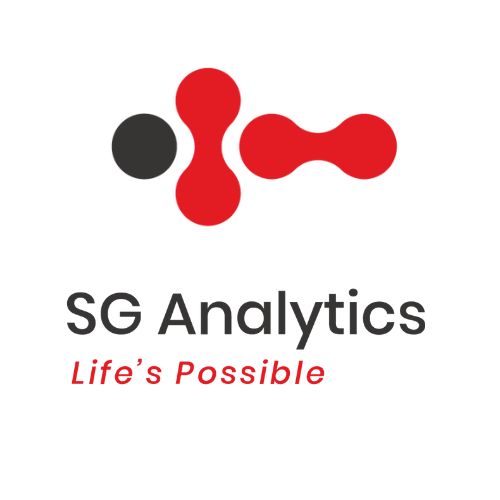- Resources
- Blog
- Data Migration: Definition, Strategy, Best Practices, & Challenges
Data Migration: Definition, Strategy, Best Practices, & Challenges
Data
Contents
May, 2025
Today, organizations are transitioning to an improvised CRM system. In such a scenario, ensuring that all information in CRM makes the move without a hitch is imperative. Data migration is the digital replica of moving to a new location.
The blog delves into data migration, its significance, and the practices that can make the process of transferring data from one data storage system to another successful.
What is Data Migration?
Data migration involves transferring data between different data formats and applications from one storage system to another. The data migration process includes data preparation, extraction, and transformation and is usually conducted when new systems are introduced in an organization. Some of the common scenarios that require data migration include:
- Replacement, upgrade, and expansion of storage systems.
- Legacy software upgrade.
- Firms are moving to cloud-based systems to optimize operations.
- Installation of new systems and augmenting existing applications that share the same dataset.
- Switching to centralized databases to attain interoperability.
- Consolidation of information systems.
Types of Data Migration
There are six types of data migration. A single data migration process involves different types, including:
- Storage Migration
Storage migration is when an organization moves data from one storage location to another, from one physical medium to another. A common reason for storage migration is upgrading storage equipment to more sophisticated modern equipment. The process encompasses moving from hardware-based storage to virtual (cloud)- based storage. Specific steps like data validation, cloning, data cleaning, and redundancy can be carried out during storage migration.
- Database Migration
Databases house data storage media where data is structured and organized. They are managed through database management systems (DBMS). Database migration includes moving from one DBMS to another or upgrading to the latest version.
- Application Migration
Application migration occurs when an organization changes application software or vendor. This migration demands moving data from one computing environment to another. After the migration, a new application platform may demand radical transformation due to new application interactions. But the major challenge comes from the old and target infrastructures’ distinctive data models and different data formats.
Read more: Best Data Mining Techniques & Methods
- Cloud Migration
Cloud migration involves moving data from an on-premises location to the cloud or from one environment to another. It is a specific storage migration. Organizations are witnessing an increase in cloud migration, and by the end of the decade 2030, most corporations will be operating on the cloud.
- Business Process Migration
Business process migration requires moving business applications, data processes, and metrics to an entirely new environment. The metrics include customer, product, and operational information. The migration is instigated by business optimization, reorganization, and mergers and acquisitions (M&A).
- Data Center Migration
Data center migration involves moving the data center infrastructure to a new physical location or moving data from the old data center infrastructure to new infrastructure equipment in the same area. A data center maintains the organization’s critical applications. It comprises servers, network routers, switches, computers, storage devices, and related data equipment.
Common Challenges in Data Migration
During data migrations, teams need to pay critical attention to the challenges:
- Source data: Not preparing the source data that is being transferred might lead to data duplicates, gaps, or errors in the new system.
- Wrong formats: Data must be opened in a format that works with the system. Files that are not properly formatted before migration might not have access controls on the new system.
- Mapping data: When data is stored in a new database, it should be mapped sensibly to minimize confusion.
- Sustainable governance: A data governance plan can enable organizations to track and report on data quality, which in turn will help understand the integrity of the data.
- Data Security: Maintaining the security of data by ensuring who can access, edit, or remove data is essential.
Data Migration Strategy
Data migration projects are stressful as they involve moving critical data and often impact other stakeholders. Due to this, organizations must have a well-defined data migration plan. Although implementation differs by migration type, organizations still use two main strategies: big bang migration and trickle migration.
Core Components of a Data Migration Strategy
Big bang migrations transfer all data within a set time frame. The advantages of creating a strong migration strategy include lower cost, quicker movement, and less complexity. The downside is that big bang migrations need the system to be offline during the entire migration process. There is also a risk of losing data if it is not adequately backed up to another location.
Trickle migrations complete a data migration within phases. Both old and new systems run simultaneously during the migration, so there is no downtime, implying less risk of losing data. However, trickle migrations are more complicated and require more planning and implementation time.
Read more: What is Data Integration – Data Integration Meaning and Tools
Best Practices for Successful Data Migration
A complete data migration strategy is critical to ensure a successful migration as well as to reduce the risks associated with errors, downtime, or data loss. Let’s explore some of the best practices:
- Know your data before initiating the migration process. This will help you plan migration more effectively, minimizing data loss and gaps.
- Thoroughly plan the entire process, taking into consideration the scope, objective, and timeline. Factors, including the data volume and format of source and target systems, and their potential challenges, should be considered.
- To mitigate potential data loss, create a data backup before heading to the data migration journey.
- Maintain thorough documentation of the migration process while transferring massive data, including configurations and any changes made during the migrations. This documentation will later act as an asset during troubleshooting.
- Security and compliance should be placed at the core of the migration process. Data security practices that can be implemented are data encryption, access control, compliance checks, third-party vetting, and data masking.
- Test and validate functionality of the new environment, along with data accuracy. This will further help identify and resolve concerns before they affect actual operations.
Conclusion – Data Migration
Data migration has become vital due to technological advancements and ever-increasing data requirements. Understanding the migration process, its challenges, and the most promising practices can further help manage modern data effectively. By doing so, they can maintain data integrity, minimize risks, and leverage the benefits of updated technologies.
About SG Analytics
SG Analytics (SGA) is an industry-leading global data solutions firm providing data-centric research and contextual analytics services to its clients, including Fortune 500 companies, across BFSI, Technology, Media & Entertainment, and Healthcare sectors. Established in 2007, SG Analytics is a Great Place to Work® (GPTW) certified company with a team of over 1200 employees and a presence across the U.S.A., the UK, Switzerland, Poland, and India.
Apart from being recognized by reputed firms such as Gartner, Everest Group, and ISG, SGA has been featured in the elite Deloitte Technology Fast 50 India 2023 and APAC 2024 High Growth Companies by the Financial Times & Statista.
FAQs – Data Migration
A typical data migration takes anywhere from a few days to several months, depending on factors such as the amount of data, migration strategy, and complexity of the data. Simpler migrations can be completed in a few hours or days. On the contrary, larger and more complex data migrations can take weeks or months.
Failing to migrate data properly carries significant risks, such as data loss, corruption, security breaches, and potential operational disruptions. These risks could further lead to financial losses, regulatory penalties, and reputational damage for the organization.
Data migration can be highly automated, but complete automation is not always feasible due to the complexity and potential variability of data and systems. Automation can further streamline tasks, but human intervention may be needed to ensure quality.
Cloud data migration can be secure, but it requires critical planning and implementation of data security measures. While the cloud offers robust security features, organizations must proactively protect their data during and after migration. Key considerations include encryption, data validation, access controls, and regular security assessments.
Several factors must be evaluated to determine the best migration strategy for businesses, including the type and complexity of data, the organization’s size, and business objectives. Consider strategies such as quick migration, phased migration to minimize downtime, and on-demand migration for constantly updated or real-time data. A cloud suitability assessment can further help identify workloads best suited for migration.
Related Tags
Data Data migration Data migration definition Data migration process Data migration strategyAuthor

SGA Knowledge Team
Contents